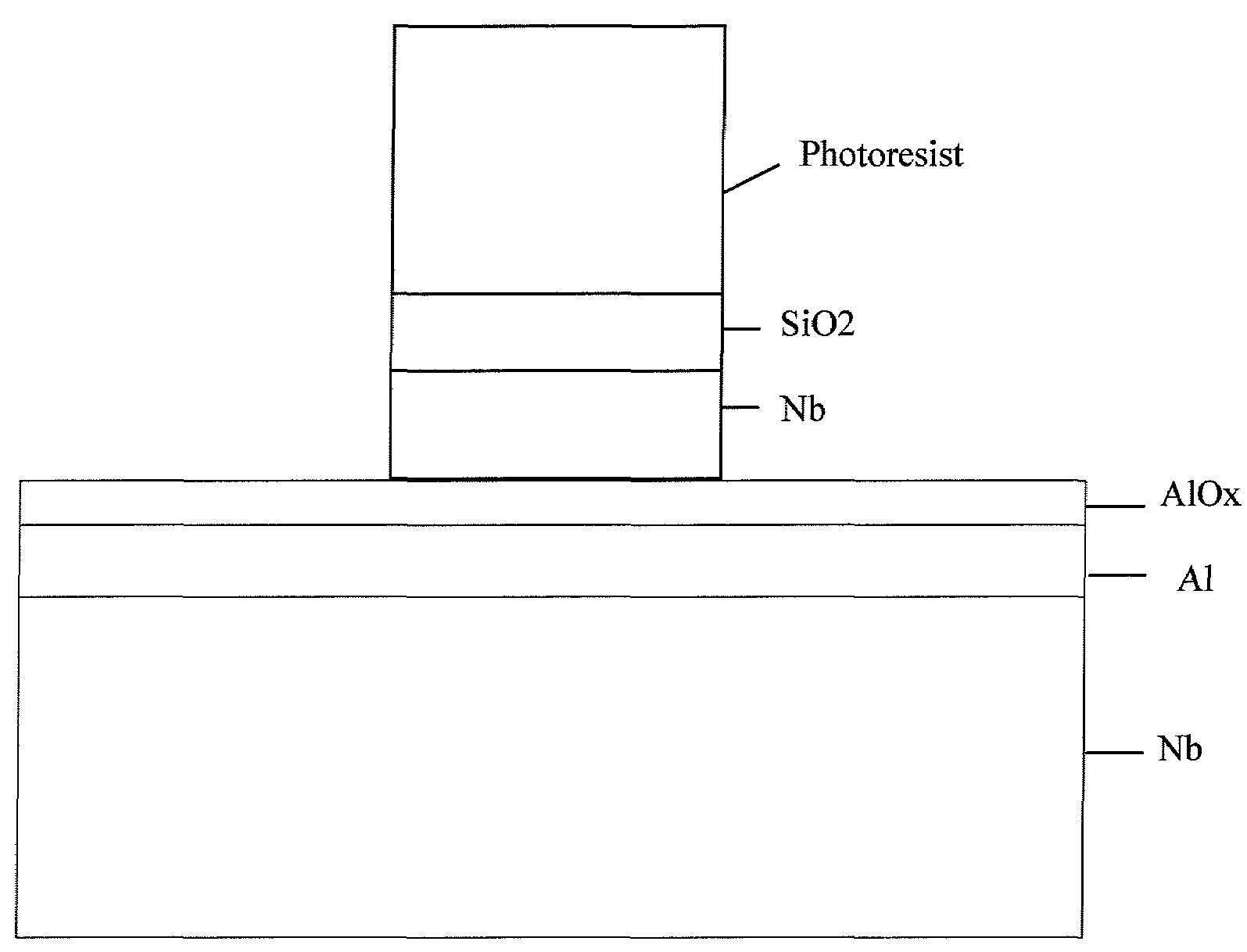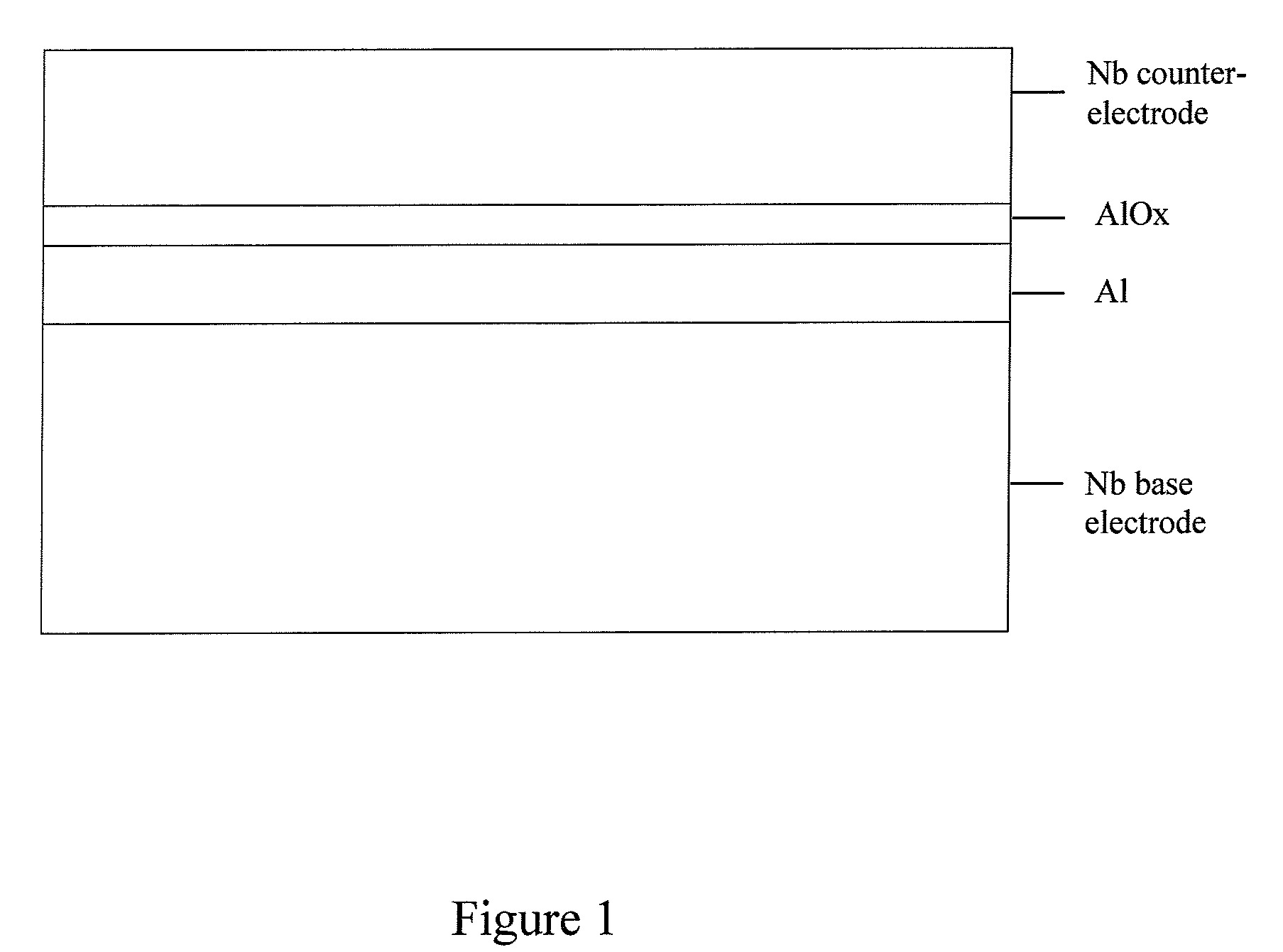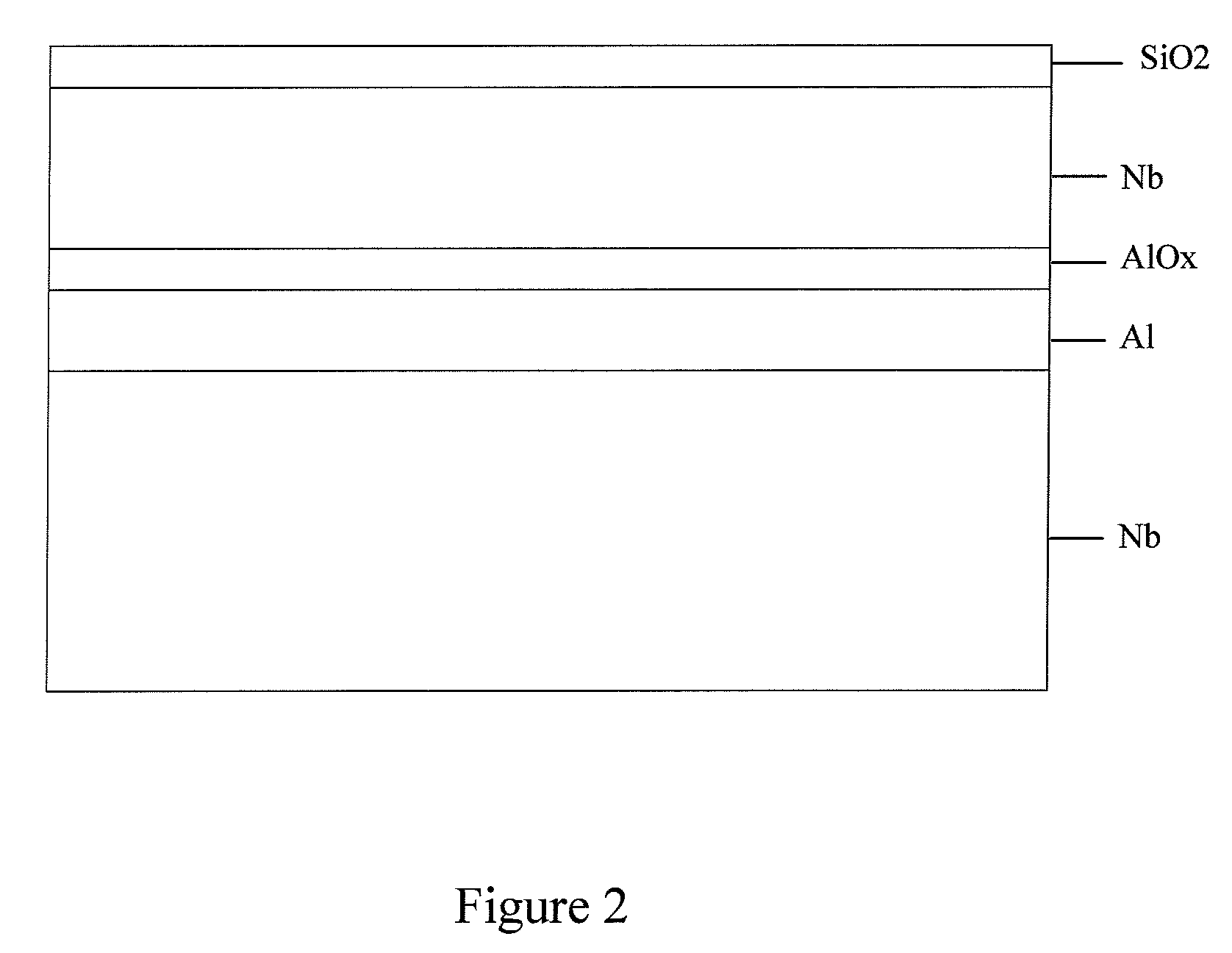Double-masking technique for increasing fabrication yield in superconducting electronics
a superconducting electronic and double-masking technology, applied in the direction of superconducting devices, originals for photomechanical treatment, instruments, etc., can solve problems such as major fabrication defects, achieve the effects of improving reliability and ic yield, increasing the number of steps, and improving ic yield
- Summary
- Abstract
- Description
- Claims
- Application Information
AI Technical Summary
Benefits of technology
Problems solved by technology
Method used
Image
Examples
Embodiment Construction
[0034]A new fabrication method is proposed for increasing the yield and quality of superconducting junctions and more particularly Josephson junctions and Josephson-based digital and analog circuits in superconducting electronics. The method is based on using a double-layer mask for partial anodization of the junction side-walls and base-electrode around the junction. The top layer of this mask is a photoresist or electron-beam resist, and the bottom layer is a dielectric (e.g., SiO2) that is insoluble in either aqueous or organic solvents. A more detailed description will now be given.
[0035]The existing fabrication scheme for making Nb-based Josephson tunnel junctions for superconducting electronics is comprised of the following fabrication steps:[0036]1. As shown in FIG. 1, a Nb / Al / AlOx / Nb trilayer is deposited in-situ on a wafer that includes or will include several other patterned layers of metal and dielectric. A tunnel barrier is formed by in-situ thermal oxidation of the Al l...
PUM
 Login to View More
Login to View More Abstract
Description
Claims
Application Information
 Login to View More
Login to View More - R&D
- Intellectual Property
- Life Sciences
- Materials
- Tech Scout
- Unparalleled Data Quality
- Higher Quality Content
- 60% Fewer Hallucinations
Browse by: Latest US Patents, China's latest patents, Technical Efficacy Thesaurus, Application Domain, Technology Topic, Popular Technical Reports.
© 2025 PatSnap. All rights reserved.Legal|Privacy policy|Modern Slavery Act Transparency Statement|Sitemap|About US| Contact US: help@patsnap.com



